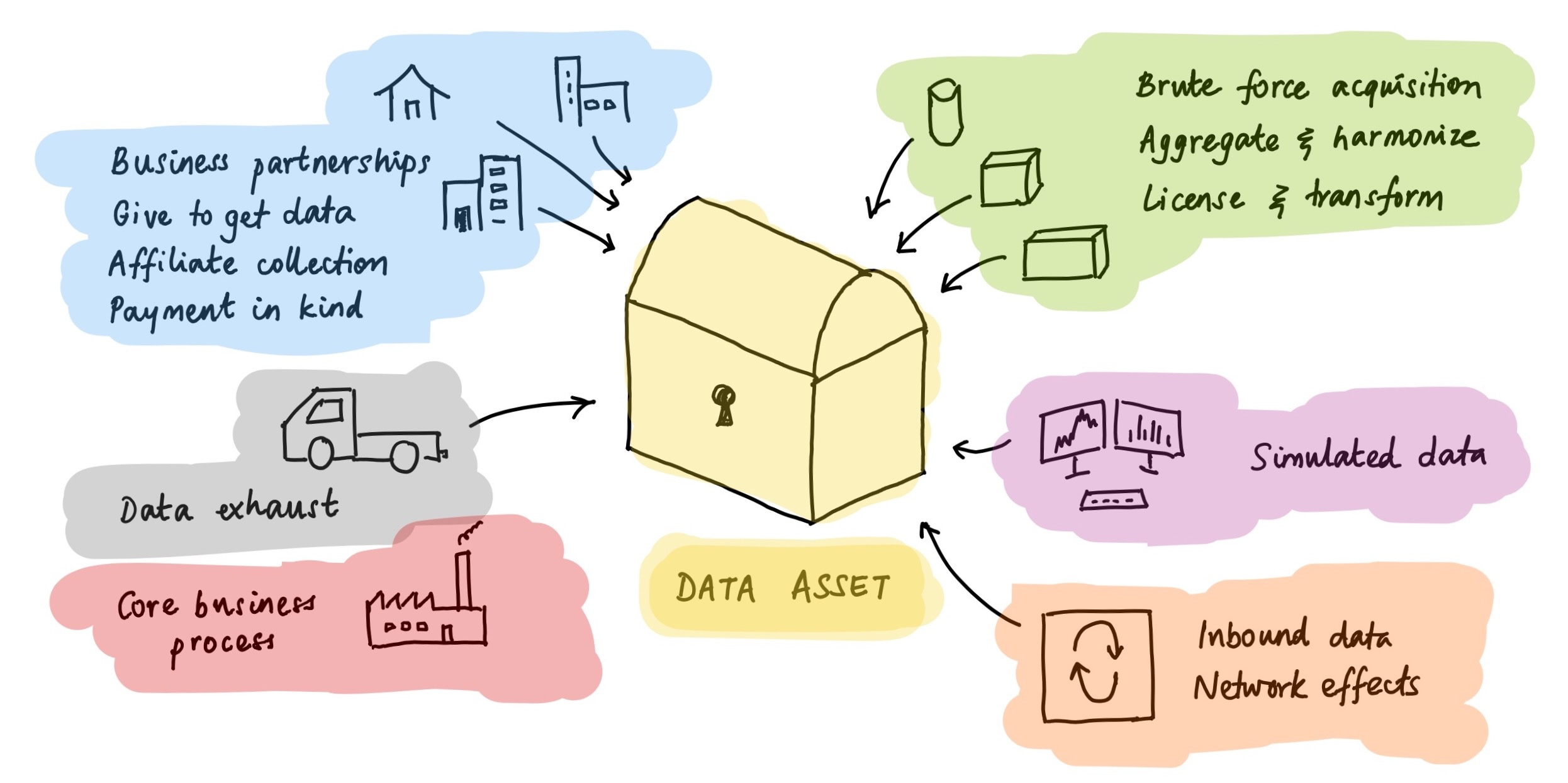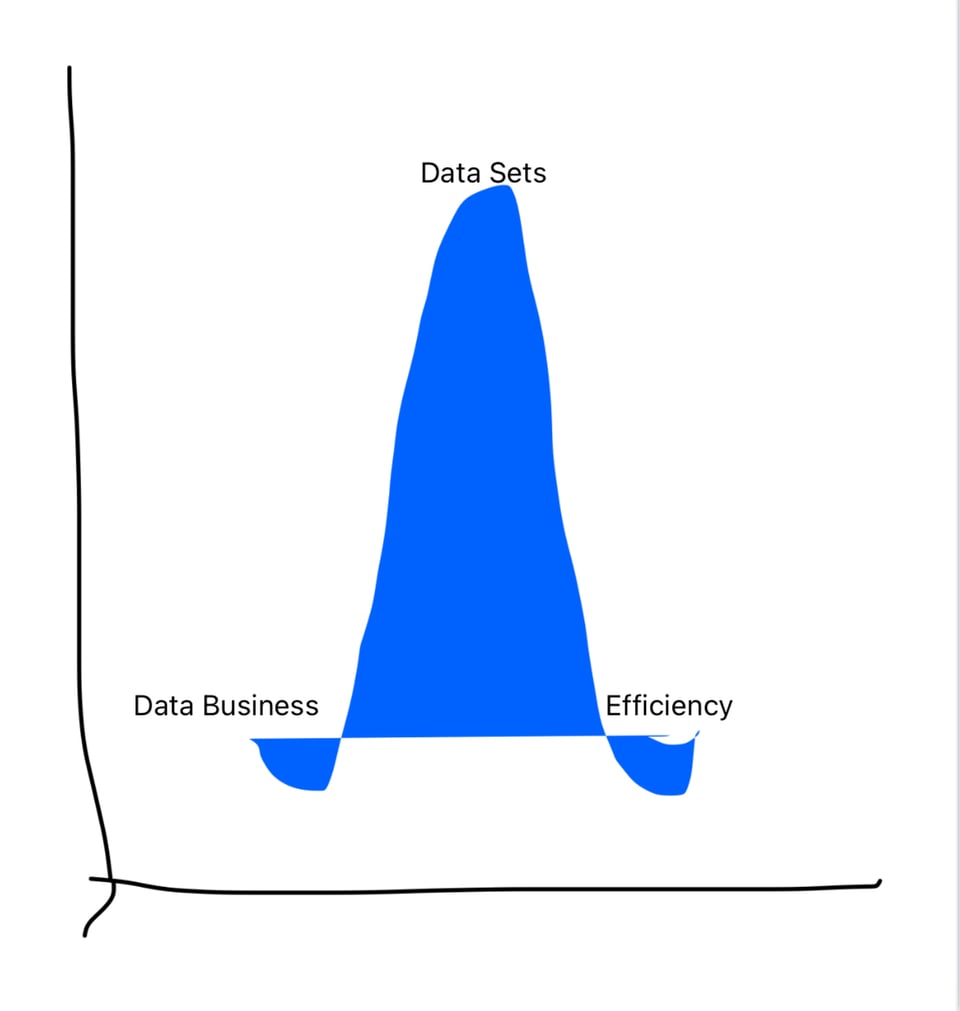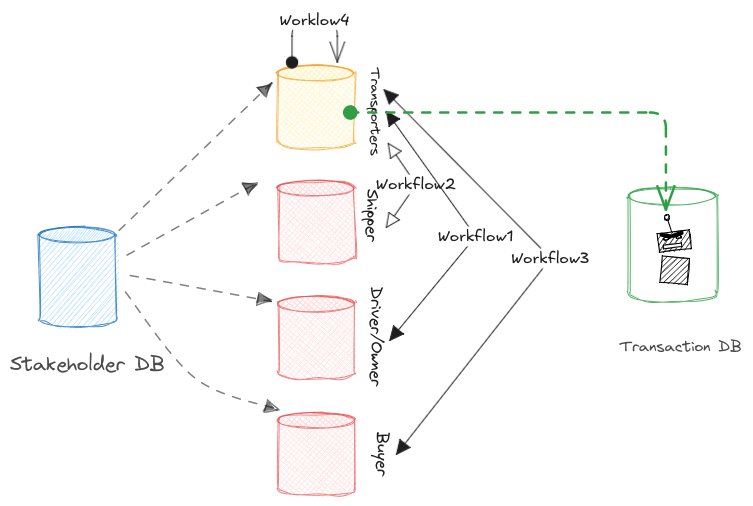Data is nuclear
Data businesses are the future, creating a competitive edge in agriculture and logistics through LLMs.
Why are data businesses the future
Late 2022, after reading a seminal post by Abraham Thomas on data businesses and how they are classified.

I realised that data businesses can be a true model in building a moat in legacy spaces like agriculture and logistics.
This one was me thinking about possibilities in Agri-space.
Ex: In agri-space number of cultivating farmers with geographic and crop data is a huge value for delivery of services.
Though the example requires collectivised efforts and functioning business partnership to give data and get data model.
One of the possible businesses that could spring up independently is standardising of data generated in core business functions for others to benefit
Next, I wrote about how many founders in the space started to build data businesses.
The post also comprised of this bell curve which represented the types of businesses.

Only few niche ones are building data businesses while the majority are building a datasets. Similarly, very few companies are actually delivering efficiency.
The illustration does a bad job of representing the complete picture.
So, I decided to revisit and expound on my thought process since I am now further convinced that data businesses are the future in these legacy spaces with GenAI agents.
I wrote about putting LLMs to use in one my blog posts.
In domains like transportation, change management is a flip side of product adoption. So, any internal workflow that enables a stakeholder to become more productive is hard to sell due to the hurdle of change management.
Instead, we augement the work of transporter by enabling their jobs to be done with agentic workflows
We have a
Stakeholder DBwith all stakeholders involved for a booking. A transporter tasked with mapping a cargo of the shipper with a truck has to execute 4 workflows(approximate) to get this job done.With LLMs we build an agent that help a transporter execute all 4 worflows without changing the way they work. It replicates the mode of input(talk or rather shout at the agent) but then structure prompt and executes all 4 workflows simulataneously to get the task of booking a truck a fraction of time.
This has profound change in how products could be designed for the stakeholders of legacy spaces. They remove the challenge of Milo criteria.
I call it the Milo Criterion: products must mature no faster than the rate at which users can adapt. Call that ideal maximum rate the Milo rate.
We now have possibility to develop a conversational product that scales with every individual user in a bespoke and customised manner. This has never been possible with the digital apps and their interfaces.
While everyone building in agriculture and logistics so far have their own datasets, it was just a byproduct to their actual workflow work. Basic workflow tools that give you efficiency since they are digital are now commoditised businesses.
For LLMs to be useful in the form of agents, we need clean data of the industry that allows them to be effective and accurate in their replies. Like I mentioned in the this post.
Very few people are building the relationships of trade as network datasets. Which happens to be the essence of data first business in legacy spaces.
If I was looking for companies to invest, I would be finding all sorts of novel data businesses. Their moat would be building the pipelines for ingestion, cleaning and transforming the data in order for agents to use. The best part is you could use some of LLMs to transform unstructured data to structured and start building that dataset.
I am looking forward to seeing such companies sprung into life.
Round up
Understanding System at work
I wrote in the previous section how workflow business will get commoditised. It doesn’t takeaway from mapping the workflows to understand the system at play.
In sectors like logistics and agriculture, which are filled with complex workflows. The critical skill of the product person comes from doing step 1(business/domain) and step 2 (recognising the workflow) in product building workflow mentioned earlier. It helps in providing the right optionality before moving to the final step 3 (product development).
Ecological thinking applied
This piece by Kevin Simler talks about viewing things at an ecosystem level. While a system is within a single agent, an ecosystem is about a niche with multiple agents.
A system can be analyzed as an ecosystem if it has independent, competing agents who can change and adapt to their environment.
This becomes paramount when you want to map the networks. The thing about legacy businesses is that they are all multi-stakeholders networks.
Links that resonated
Advice for a friend who wants to start a blog
Only a single link to recommend since it happens to be one message I keep harping on to anyone who reads.
Sign off
It’s coming close to a month since the rehabilitation to US. The gears in my brain are begining to run smoothly on topics we cover here. So back to regular programming.
It feels really nice to be proven right about being focused on data businesses. They will slowly become the norm in the next few months. Larger companies will buy smaller ones for their datasets to build their moat or prolong their relevance.
Singing off till next time,
Vivek, pulling an all-nighter to get this out.
